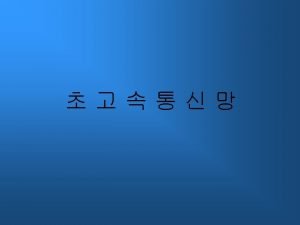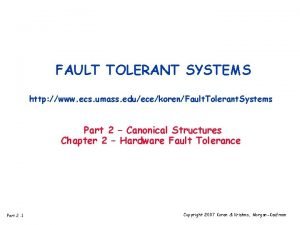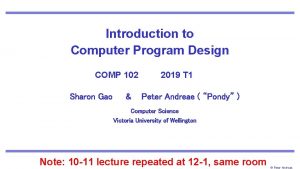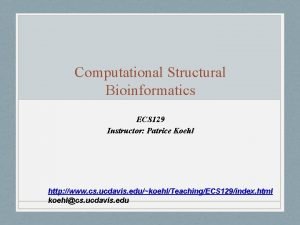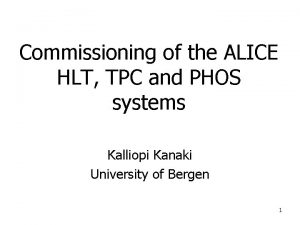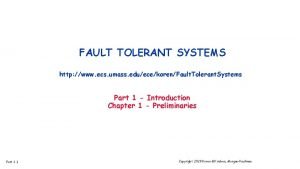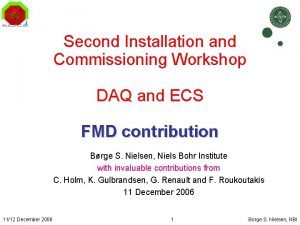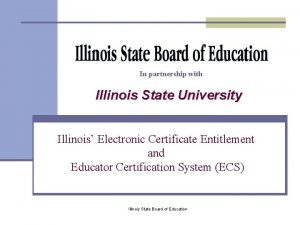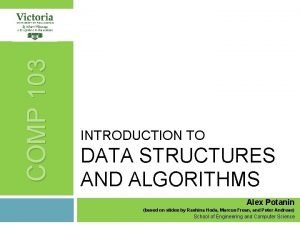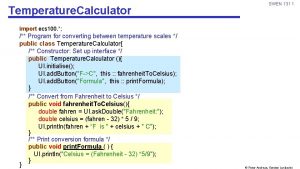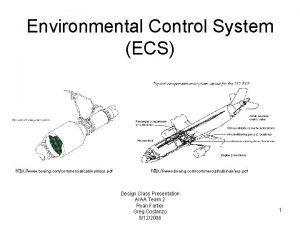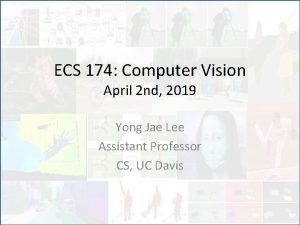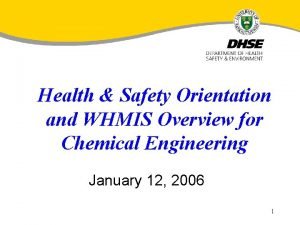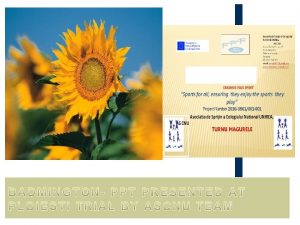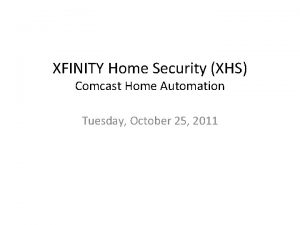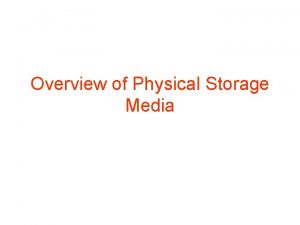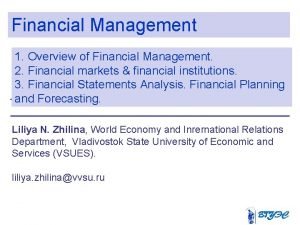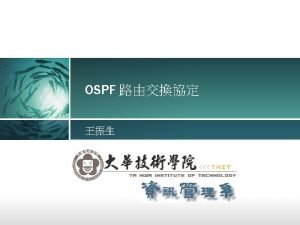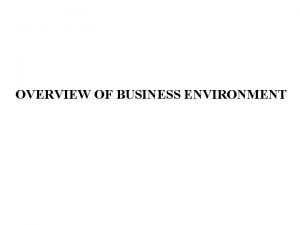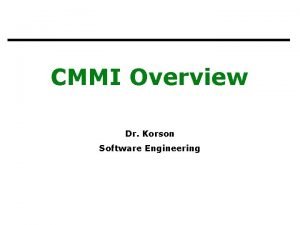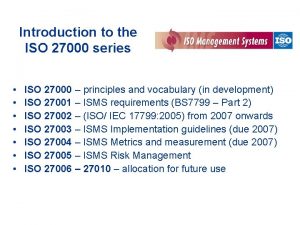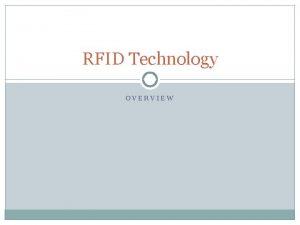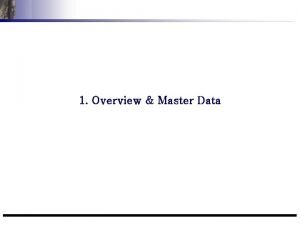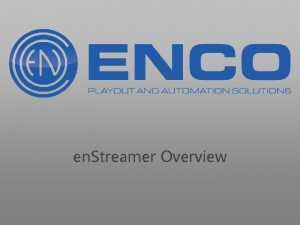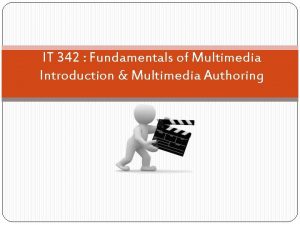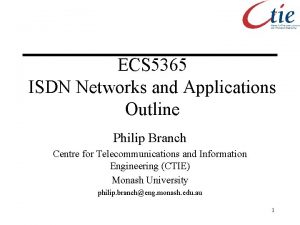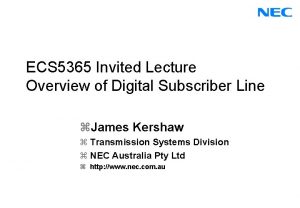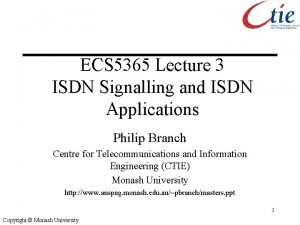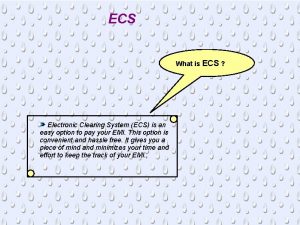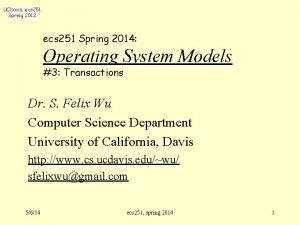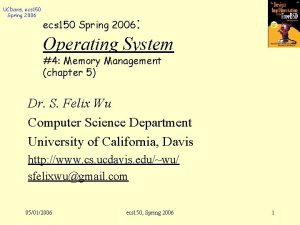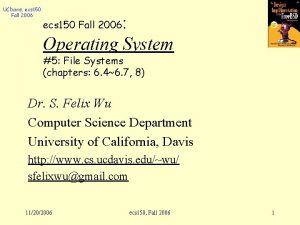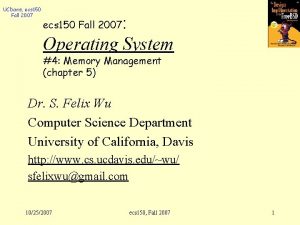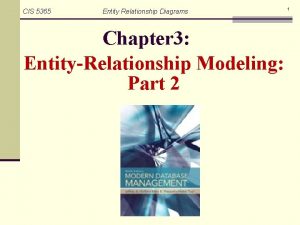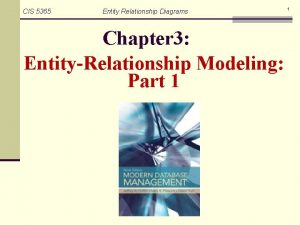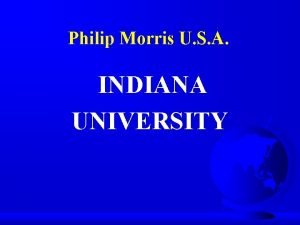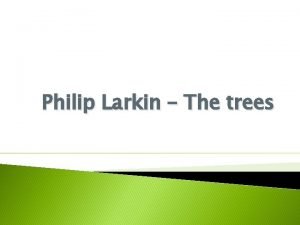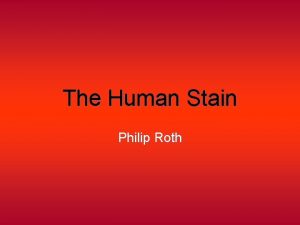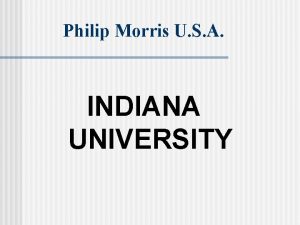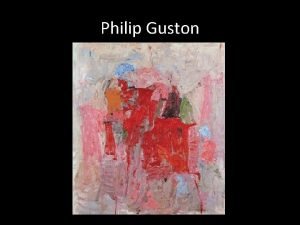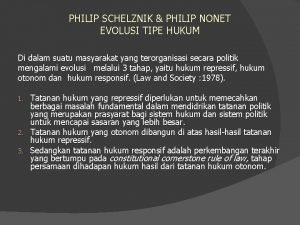ECS 5365 Lecture 1 Overview of NISDN Philip





































- Slides: 37

ECS 5365 Lecture 1 Overview of N-ISDN Philip Branch Centre for Telecommunications and Information Engineering (CTIE) Monash University http: //www. anspag. monash. edu. au/~pbranch/masters. ppt 1

Outline • • Network evolution ISDN Concepts ISDN reference model ISDN services 2

Public Switched Telephone Network (PSTN) • • Customer Premises Equipment Subscriber Loop Local Exchange Network Long Distance Trunk Network 3

ISDN • • Culmination of digitisation of network Network evolution Signalling evolution Services evolution 4

Network Evolution • Separate analog transmission and switching (PSTN) – Frequency Division Multiplexing • Integrated Digital Transmission and Switching – Time Division Multiplexing – Integrated Digital Network (IDN) • Digital access to the subscriber – Integrated Services Digital Network (ISDN) 5

Signalling Evolution • In channel – inband – out of band • Common channel signalling • Signalling system no. 7 for inter-exchange signalling 6

Intelligent Network Services • Separate the switching functions from service functions • Use a few software based service processors with access to databases • New services can be added quickly • Allow users to customize network behaviour 7

ISDN Concepts – Support both voice and non-voice applications – 64 kbps channels – Both circuit and packet switched connections – Single integrated network access point – Intelligence for services, maintenance and network management – Layered protocols - OSI concepts 8

Standardisation • • • User-network interface Network capabilities Services CCITT Red Book 1984 CCITT Blue Book 1988 9

User-Network Interface • Basic Rate 192 kbps • Primary Rate 2. 048 Mbps • Separate channels for signalling and data – B channels for data – D channels for signalling (and data) 10

Basic Rate Interface • 2 B channels each at 64 kbps • 1 D channel at 16 kbps • D channel for signalling and low priority data • Can be supported over twisted pair • Can be multipoint 11

Primary Rate Interface • 30 B channels • 1 D channel at 64 kbps • Also H channels – H 0 384 kbps – H 11 1536 kbps – H 12 1920 kbps • Only ever point to point 12

Functional Groupings • • • Network termination 1 (NT 1) Network termination 2 (NT 2) Terminal equipment 1 (TE 1) Terminal equipment 2 (TE 2) Terminal Adaptor (TA) 13

Network termination 1 (NT 1) • • • OSI layer 1 functions Physical and electrical termination Timing Power Multidrop termination – contention 14

Network termination 2 (NT 2) • OSI layer 2 and 3 functions – link functions – network functions • NT 2 devices include – PABX – LANs – Terminal Controllers. 15

Terminal equipment 1 (TE 1) • devices that support ISDN interface • voice, data or video • functions for call setup, teardown, maintenance 16

Terminal equipment 2 (TE 2) • existing non ISDN equipment – eg. X. 25, RS 232 interfaces • Require terminal adaptors to access ISDN 17

Terminal adaptor (TA) • Connects non-ISDN equipment to ISDN • Main functions of TA – Rate adaptation (adaption) – Protocol conversion 18

Reference Points • T (terminal) NT 1 -NT 2 • S (system) NT 2 -TE 1, NT 2 -TA – separates user’s terminal equipment from network equipment • R (rate adaption) TE 2 - TA • U (user) NT 1 - public network – defined in USA 19

T Reference Point • Terminal reference point • Separates user’s network from network provider • Minimal ISDN network termination 20

S Reference Point • Separates user’s terminal equipment from network • Individual ISDN terminal interface 21

R Reference Point • Interface between user equipment that is not ISDN compatible and ISDN adaptor • Rate and protocol adaption 22

U Reference Point • NT 1 - public network • defined in USA, but not by ITU-T 23

D Channel Protocols • Layer 1 (I. 430 Basic, I. 431 Primary) • Layer 2 - Data Link LAP-D • Layer 3 – Call control - I. 451 – Packet switching X. 25 level 3 • Higher layers for end to end user signalling 24

B Channel Protocols • • • Layer 1 (I. 430 Basic, I. 431 Primary) Layer 2 - dependent on application Layer 3 - dependent on application Higher layers - dependent on application Packet switching services use – layer 2 X. 25 LAP-B – layer 3 X. 25 level 3 25

ISDN Services • Bearer services – transport services • Teleservices – combine transport function with higher processing functions • Supplementary services – enhance bearer services 26

ISDN Bearer Services • • Means to convey information OSI layers 1 to 3 Circuit mode (10 modes) Packet mode (3 modes) 27

Circuit Mode Bearer Services • • 64 kbps unrestricted, 8 k. Hz structured 64 kbps, 8 k. Hz structured, voice 384 kbps unrestricted, 8 k. Hz structured multiuse, higher bit rates etc. 28

Packet Mode Bearer Services • Virtual circuit • Permanent virtual circuit • Connectionless (to be defined) 29

ISDN Teleservices • • • Telephony Teletex Telefax - group 4 fax Mixed mode - text + fax image Videotex Telex 30

ISDN Supplementary Services • • • User to user signalling Call forwarding unconditional Closed user group Direct Dialing in Call Waiting 31

ISDN Supplementary Services (Cont). • • • Calling line identification presentation Calling line identification restriction Line hunting Three Party Service Call Transfer Credit Card Calling 32

Most Common Applications of ISDN • • Telephony and Fax Video-conferencing LAN to LAN connectivity Internet access 33

Limitations of ISDN • Inadequate for television quality – Need for B-ISDN • 64 kbps PCM voice wasteful • Expense (at least in Australia) • Changed technological environment – circuit switching / packet switching • Changed political environment? – deregulation, private networks etc. 34

Summary • Networks have evolved from analog to digital from the core to the edges • ISDN is the culmination of this process • ISDN defines a number of interfaces and functional groupings • ISDN uses these to enable sophisticated services to be defined 35

Review and Preliminary Reading • Review reading for this week – Chapter 4, 5 and 9 of Stallings • Preliminary reading for next week – Chapter 6 and 7. 1 of Stallings 36

Review Questions (not for assessment) • Why don’t all TE 1 devices need to connect to NT 2 equipment? • The BRI provides 2 B channels and 1 D channel, total 144 kbps. However, a BRI interface is defined at 192 kbps. Why? • In what way might a carrier treat a 64 kbps 8 k. Hz structured speech bearer service differently to a 64 kbps, unrestricted, 8 k. Hz structured bearer service? • Which bearer services might be used for G 4 fax? 37
 Modem atm
Modem atm 01:640:244 lecture notes - lecture 15: plat, idah, farad
01:640:244 lecture notes - lecture 15: plat, idah, farad Ece umass
Ece umass Comp 102
Comp 102 Ecs 129 uc davis
Ecs 129 uc davis Tpc online tracking
Tpc online tracking Ecs umass
Ecs umass Ecs commissioning
Ecs commissioning Isbe ecs
Isbe ecs Engineering consulting services ecs
Engineering consulting services ecs Comp 103
Comp 103 Cisco ecs
Cisco ecs Dean ericsson
Dean ericsson Ecs calculator
Ecs calculator Html
Html Environmental control system ecs
Environmental control system ecs Ecs 174 uc davis
Ecs 174 uc davis Pompe de recyclage ecs
Pompe de recyclage ecs Whmis overview
Whmis overview Where does badminton originated
Where does badminton originated Xfinity home subscriber portal
Xfinity home subscriber portal What is physical storage
What is physical storage Chapter 1 overview of personal finance answers
Chapter 1 overview of personal finance answers Overview of financial management
Overview of financial management Data quality and data cleaning an overview
Data quality and data cleaning an overview Ospf overview
Ospf overview Introduction product overview
Introduction product overview Overview of business environment
Overview of business environment Cmmi overview
Cmmi overview Chapter 1 an overview of financial management
Chapter 1 an overview of financial management The iso 27000 series
The iso 27000 series Rfid technology overview
Rfid technology overview Sap sd overview
Sap sd overview Streamer overview
Streamer overview What is stylistic overview
What is stylistic overview Overview of multimedia software tools
Overview of multimedia software tools Introduction product overview
Introduction product overview Basha bear down days
Basha bear down days
